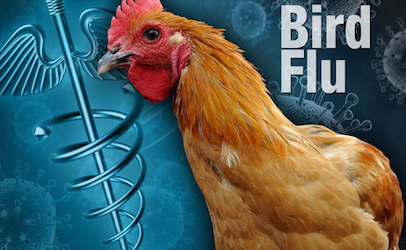
Two letters, signed by representatives of differing communities, express dissatisfaction with the Biden-Harris Administration’s progress in fighting Avian flu and offer suggestions for improvement. One of the letters is from Hannah Connor, Deputy Director of Environmental Health, for the Center for Biological Diversity, and also written on behalf of CleanAIRE NC, Coastal Carolina Riverwatch, Mercy for Animals, North Carolina Environmental Justice Network, Socially Responsible Agriculture Project (SRAP), Southern Coalition for Social Justice, Waterkeeper Alliance, and the Winyah Rivers Alliance. Connor wrote Mandy Cohen, Director of the Centers for Disease Control and Prevention, “ I write to implore the Centers for Disease Control and Prevention (CDC) to undertake a more vigorous response to the avian influenza outbreak.
This response should include increased public transparency, on-the-ground epidemiological investigations, and other measures to understand and contain the risk presented by the recent outbreak of the H5N1strain of highly pathogenic avian influenza (HPAI) in dairy cattle herds and at least three farm workers — two, in Texas and one in Michigan — connected to the most recent spread of HPAI in dairy cows and one connected with poultry depopulation activities in Colorado. The agency should take bold action to determine the true extent of this outbreak and stop it before its threat to people, wildlife, and farmed animals becomes impossible to contain.” The second letter went to Secretary of Agriculture Tom Vilsack and is from major representatives of the U.

S. dairy, turkey, and egg industries. It demands that USDA and its federal partners get on with the development of safe and effective H5Nx vaccinations for dairy cows, turkeys, and egg-laying hens to help mitigate the circulation of H5Nx in dairy herds and reduce the risk of spill-over of highly pathogenic avian influenza (HPAI) into commercial turkey flocks and egg layer operations.
These concerns about the federal response come as the HPAI virus has taken out 101 million birds from the U.S. commercial flocks.
Since March, bird flu has infected at least 192 dairy herds, with 14 human cases also being reported. “As this outbreak of H5Nx continues to progress, it is clear that a new approach is needed. This includes the availability of animal vaccines effective against current and future strains of H5Nx that are necessary for a sustainable food supply as well as human and animal health,” representatives of the United Egg Producers, International Dairy Foods Association, National Milk Producers Federation and National Turkey Federation wrote in their letter to Vilsack.
Connor writes: “The substantial threat avian influenza poses to public health, wildlife, and food security has been exacerbated by the virus’s recent spillover into dairy herds and humans, and CDC must respond to this outbreak with strong, proactive measures.” Connor adds, “CDC must respond to this outbreak with solid and proactive measures. CDC should continue to scale up an ambitious response effort in coordination with other authorities, including on-the-ground epidemiological surveys sufficient to document the potential spread of HPAI.
An effective response should include a significant increase in transmission countermeasures, including the testing of persons associated with dairy operations; proactive testing of persons associated with other animal agriculture industries; proactive testing of livestock, milk, raw beef products, and farm waste and wastewater, and sufficient data transparency for scientists and public health officials to conduct their work without further jeopardizing workers. (To sign up for a free subscription to Food Safety News, click here. ).














